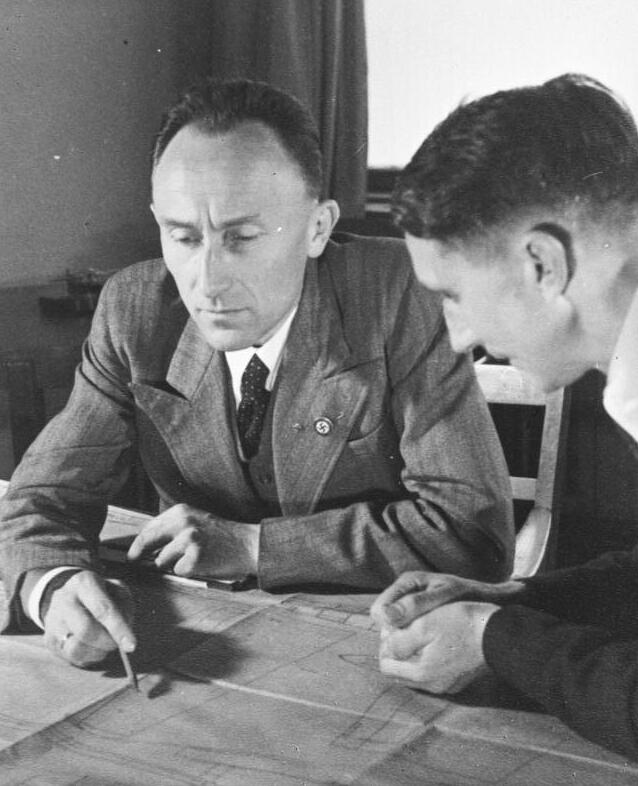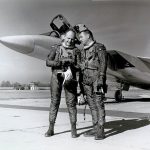On this day in aviation history, December 21, 1936, the Junkers Ju 88 made its first flight. This aircraft would go on to play a vital role in the German Luftwaffe’s campaigns across Europe, North Africa, the Mediterranean, and the North Sea as a dive bomber, torpedo bomber, medium bomber, night fighter, and reconnaissance aircraft.
In 1935, Nazi Germany announced the creation of the Luftwaffe, which explicitly violated the terms of the Treaty of Versailles that, among other things, prohibited Germany from fielding an air force. In August of that year, the Reichsluftfahrtministerium (RLM; German Air Ministry) had revised a 1934 requirement for a new multirole aircraft to become a Schnellbomber, a high-speed bomber that would carry a crew of three, a payload of 800–1,000 kg (1,800–2,200 lbs.), and have no defensive turrets, relying on its speed to avoid interception. The Junkers Aircraft Works, one of the companies tapped for the Schnellbomber program, submitted two designs for selection, the twin-tailed Ju 85, and the single-tailed Ju 88. The RLM would select the latter for development.

The Junkers Ju 88 was primarily designed by Junkers’ chief designer Ernst Zindel, with assistance from engineers Wilhelm Heinrich Evers and Alfred Gassner, who ironically enough both had experience in the American aviation industry, with Evers having known pioneering American aviators Glenn Curtiss and Thomas Benoist before WWI and later found work at the Fokker Aircraft Company of America, while the Austrian-born Gassner had worked for Fairchild Aircraft before returning to Germany.
On December 21, 1936, test pilot Karl-Heinz Kindermann took the first prototype Ju 88, Werknummer (WNr) 4941, for its maiden flight. As the aircraft was not under military ownership, it was given the civil registration D-AQEN. Later after four more prototypes were built, the RLM changed the mission profile of the Ju 88. Now it was expected to perform as a dive bomber, and later prototypes would see the introduction of dive brakes on the wings, the wing structures themselves being strengthened to withstand G-forces, and the dual-strut rearward-retracing landing gear on the initial prototypes was replaced by a single-leg main gear strut that rotated 90° during the retraction sequence, a feature that would be standardized on the production models. In addition to an internal bomb bay, the Ju 88 also came equipped with external bomb racks mounted on the wings between the forward fuselage and the engine nacelles.
Although the aircraft had two Junkers Jumo 211 inverted V12 engines that were also a feature of the Heinkel He 111 medium bomber and the Ju 87 “Stuka” dive bomber, the Ju 88 had annular radiators that incorporated both the radiators for the engine coolant and the oil coolant, and were placed forward of each engine and directly behind each propeller, allowing the two cooling lines to be as short as possible, with integral port and starboard air intakes for cooling the exhaust headers, the starboard inlet also supplying the inlet air for the supercharger.
In the typical bomber variant, as the A-4 model, the Ju 88 had a four-man crew closely packed together in the nose of the aircraft. These were the pilot, the navigator, the bombardier, and the radio operator. The aircraft was also had five 7.92mm machine guns in flexible mounts, with one placed in the front windscreen that could be fired by the pilot, one in the lower fuselage nose glazing near the bombsight, two in the rear of the cockpit, firing aft, and a fifth in the ventral gondola, which also served as the crew’s entry hatch for the aircraft.
When Germany invaded Poland on September 1, 1939, the Ju 88 was just beginning to enter operational service with Luftwaffe bomber units, and while it did have its combat debut over Poland, it was often overshadowed in the Polish campaign by the more numerous Heinkel He 111s and Dornier Do 17s, which had also seen action during the Spanish Civil War. The Ju 88 would get to prove itself in the campaigns of 1940, however, such as in the invasions of Norway, Holland, Belgium, and France, and were among the bombers deployed during the Battle of Britain. The Ju 88s would also see combat outside western Europe with the invasions of Yugoslavia and Greece, the North African campaign, and most famously, the war in the east against the Soviet Union, starting with Operation Barbarossa. During this time, the Germans also delivered Ju 88s to the air forces of Finland, Hungary, Italy, and Romania, whose pilots often flew their Ju 88s in conduction with Luftwaffe Ju 88s on joint operations. In addition to the bomber variants, the Ju 88 was flown as a heavy fighter, long-range photo-reconnaissance aircraft, and night fighter.

But while the Ju 88 was still a rugged design, the Allies were deploying new fighters or improvements to existing ones to counteract the Luftwaffe, and as the tide of the war gradually turned against Germany and its allies, the Ju 88s were called to defend the Reich, especially as radar-equipped night-fighters sent out to intercept the Lancasters and Halifaxes of RAF Bomber Command. In order to improve upon the original Ju 88, Junkers also developed newer models based on the 88, such as the Ju 188, the Ju 288, and the Ju 388, which often featured pressurized cockpits, but by then, it was too little, too late. In an act of desperation, some Ju 88s were even converted into unmanned flying bombs through the Mistel program of 1945, where a Messerschmitt Bf 109 or Focke Wulf Fw 190 fighter would be mounted atop a Ju 88, direct it towards the bridges spanning the Oder River, release themselves from the Ju 88 and peel away as the bomber would plunge into the bridges to cut off the advancing Red Army. However, few if any hits were scored, and what bridges were hit were then repaired by Soviet engineers. By VE-Day, Ju 88s were among the many aircraft types that littered German airfields that were now under Allied occupation.
Besides being flown in combat by the German Luftwaffe and with the air forces of its allies, the British, Americans, and Soviets would all fly captured examples for evaluation purposes, and the French and the Spanish would prove to be the last active operators of the type, flying their examples well into the early 1950s. Although over 15,000 Ju 88s were built, only two examples from the war survived to be displayed in the Royal Air Force Museum and the National Museum of the United States Air Force respectively. However, in the postwar years, several wrecks have been recovered, especially in Norway and Eastern Europe. The Norwegian Armed Forces Aircraft Collection at Gardermoen, near Oslo, Norway, has been restoring an example recovered from Jonsvatnet Lake. A Ju 88 G-6 night-fighter recovered from Hungary’s Lake Balaton has also been restored, with its fuselage and reconstructed radar antennas now on display at the Deutsches Technikmuseum in Berlin.
Today, the Junkers Ju 88 is considered by aviation historians to have been the one of the most versatile and adaptable German aircraft of WWII. Even allied test pilots who evaluated it spoke highly of its performance, while German pilots praised its flight characteristics. In the end, however, the Ju 88 was not immune to the final outcome of WWII, but the aircraft served from the onset of hostilities right up to the end of the war.
Today in Aviation History is a series highlighting the achievements, innovations, and milestones that have shaped the skies. All the previous anniversaries are available HERE












































